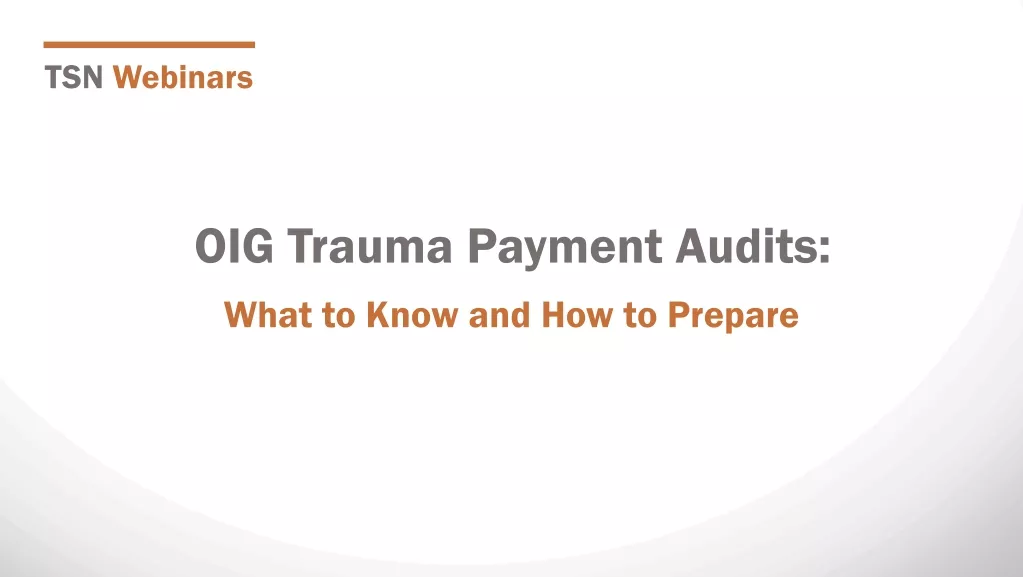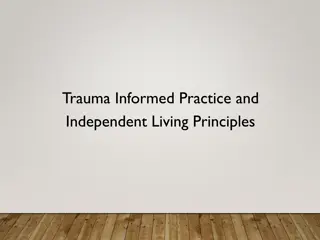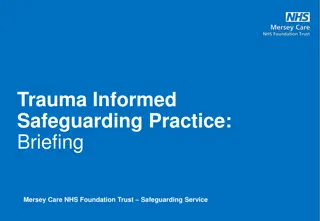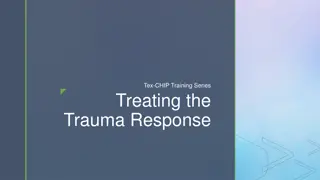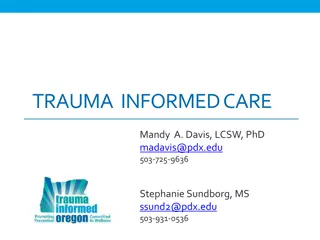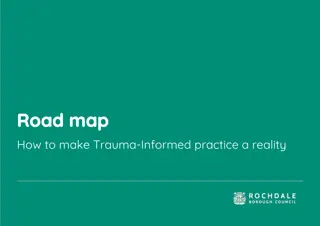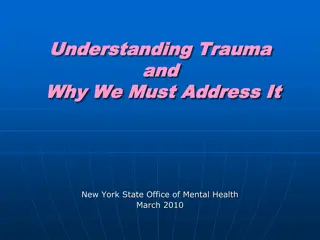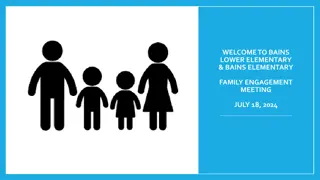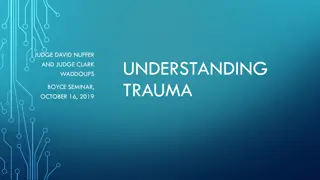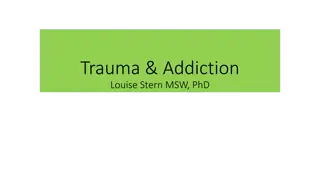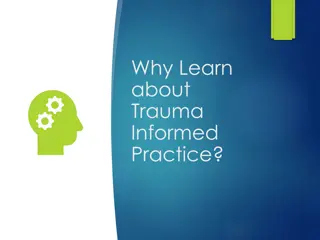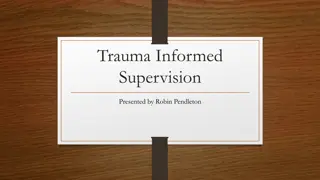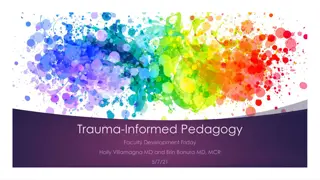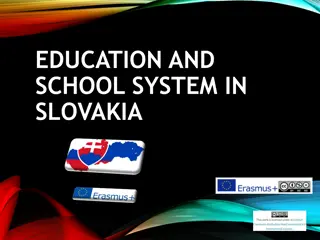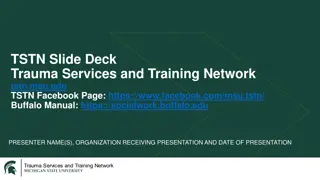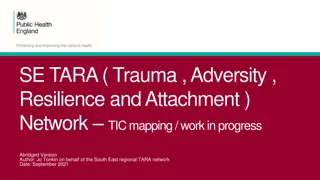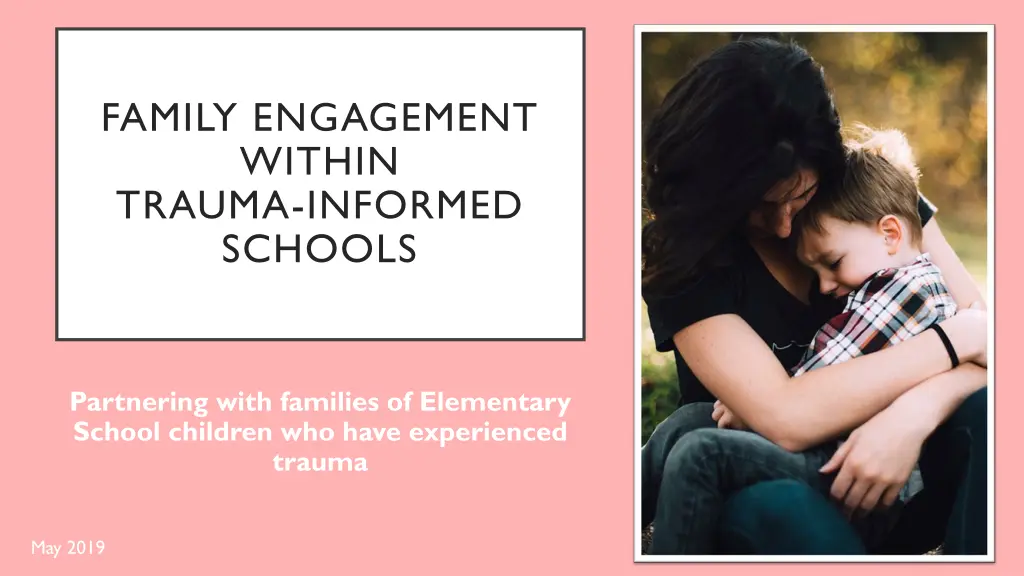
Engaging Families in Trauma-Informed Schools
Partnering with families of elementary school children who have experienced trauma is crucial for providing support and creating a safe environment. Understanding trauma, engaging families, and offering resources are essential components in helping children cope with the effects of traumatic events.
Download Presentation

Please find below an Image/Link to download the presentation.
The content on the website is provided AS IS for your information and personal use only. It may not be sold, licensed, or shared on other websites without obtaining consent from the author. If you encounter any issues during the download, it is possible that the publisher has removed the file from their server.
You are allowed to download the files provided on this website for personal or commercial use, subject to the condition that they are used lawfully. All files are the property of their respective owners.
The content on the website is provided AS IS for your information and personal use only. It may not be sold, licensed, or shared on other websites without obtaining consent from the author.
E N D
Presentation Transcript
FAMILY ENGAGEMENT WITHIN TRAUMA-INFORMED SCHOOLS Partnering with families of Elementary School children who have experienced trauma May 2019
WHY When young children are exposed to a traumatic event, they depend on adults, especially their parents, to protect them and to make sense of the world for them. However, loss of trust in adults and new fears are common after traumatic events. Parents need to be able to listen to their children and hear their concerns. They also need to help them feel safe. If parents are traumatized, it is important for them to find support for themselves and to reach out to others for support for their children. - Joy D. Osofsky, Ph. D. 66% of children have experienced a traumatic event by the time they turn 16
What is Trauma? What is Trauma-Informed Care? Why is Family Engagement in times of trauma Important? How can we support families when their children have experienced trauma? TODAY S OUTLINE What information can we share with families about trauma and how to support their child? Resources for Families Questions
An event, series of events, or set of circumstances that is experienced by an individual as physically or emotionally harmful or life threatening and that has lasting adverse effects on the individual's functioning and mental, physical, social, emotional, or spiritual well-being WHAT IS TRAUMA? - SAMHSA, 2018 A trauma is a scary, dangerous, or violent event that can happen to any or all members of a family - National Child Traumatic Stress Network, 2011
TRAUMA EXAMPLES Accidents/Injuries Serious Illness House Fires Crimes Combat injuries or death of a family member Community Violence Sudden loss of a loved one School Violence Domestic violence Abuse/ Neglect Homelessness Bullying Acts of Terrorism Living in or escaping a war zone Natural Disasters Stress
Secondary traumatic stress is the emotional duress that results when an individual hears about the firsthand trauma experiences of another. - National Child Traumatic Stress Network WHAT IS SECONDARY TRAUMATIC STRESS? STRESS? WHAT IS SECONDARY TRAUMATIC
WHAT DOES TRAUMA LOOK LIKE Preschool and Elementary Students (may): Show fear of separation from caregiver Cry or scream a lot Eat poorly (lose / fail to gain weight as expected) Feel guilt or shame Lack Focus Have issues with sleep (too much/too little, nightmares) Show a significant behavior change Flinch or startle easily
SIX PRINCIPLES OF TRAUMA INFORMED CARE Make sure students and families feel physically and psychologically safe. 1 Safety Be as honest as possible. Cultivate a trusting relationship by listening closely, showing that you care, and following up on promised support. Trustworthiness and Transparency 2 Peer Support and Mutual Self- Help Encourage students and families to seek out family, friends, and community groups with similar experiences. Help them find these resources if needed. 3
SIX PRINCIPLES OF TRAUMA INFORMED CARE, CONT D Everyone has a role to play. Let families and students know they are not facing this situation alone. Healing happens in relationships. We shouldn t try to do it on our own and neither should caregivers. Bring families into the decision-making process as much as possible. Recognize and build upon individuals /families strengths. Help develop new skills as necessary. Believe in the resilience of those involved and their ability to heal and promote recovery. Seek to understand and encourage the family s healing process. Actively move past cultural stereotypes and biases. Offer gender responsive services. Leverage healing value of traditional cultural connections. Recognize and address historical trauma. Collaboration and Mutuality 4 Empowerment, Voice, and Choice 5 6 Context
CHECK YOUR UNDERSTANDING How many principles of Trauma Informed Care can you remember? How would you explain the principles in your own words? 1 2 3 4 5 6 ? ? ? ? ? ?
What information do we need? Why is this important? How can we best engage with families?
THE WHY Communicating with and including families significantly improves outcomes for students who have experienced trauma - (Brown et al., 2006; Tan, Wang, & Ruggerio, 2017; Goodkind, LaNoue, & Milford, 2010) Poor planning or execution of engagement around trauma can have a negative impact on students and families
THE WHY Accidents/ Injuries Serious Illness House Fires Crimes Families are likely managing: Their own stress Difficulty sleeping for themselves, their child Interpersonal challenges with family, friends Combat injuries or death of a family member Sudden loss of a loved one Community Violence School Violence Domestic violence Abuse/ Neglect Bullying Homelessness Living in or escaping a war zone Natural Disasters Acts of Terrorism Stress
THE HOW: SUPPORTING FAMILIES IN CRISIS 1 2 3 4 5 Be Honest Share information openly and willingly with families Be Resourceful Be prepared to connect families to resources for themselves and their child Be Calm Be Positive Recognize families strengths and call them out! Only focusing on the negatives can be counter-productive Be Prepared to Listen Families are experts on themselves. Listen to what they have to say first! Take a breath and make sure you are calm before contacting families
1-THINK 2-PAIR 3-SHARE 1. Think Complete the worksheet activity on your own (5 minutes) 2. Pair Find a neighbor and talk about what you wrote down (2 minutes) 3. Share Come back together as a group and discuss (3 minutes)
ACTIVITY SHARE OUT Safety What principles do you feel most successful at as an individual/school? What principles are an area of growth for you or your school? Trustworthiness and Transparency Peer Support and Mutual Self- Help Collaboration and Mutuality Empowerment, Voice, and Choice Cultural, Historical, and Gender Issues
SCHOOLS CAN SUPPORT FAMILIES BY SHARING AND MODELING THESE STRATEGIES Model Self-Care Encourage Questions Encourage Healthy Habits Supportive Families Alleviate Blame Be a Good Listener Set Routines
RESOURCES AND SERVICES Resources Feelings Chart for Talking with Young Children Exercises for Grounding, Emotional Regulation, & Relaxation for Children and their Parents Databases Services Syntero (syntero.org) Family and Children First Council (helpmykid.org) Mental Health America of Franklin County (mhafc.org) redtreehouse.org/resources nctsn.org/resources
The best thing that can happen to a dysregulated child is a regulated adult. You can t pour from an empty cup The best thing that can happen to a dysregulated adult is a regulated adult.
What is Trauma? What is Trauma-Informed Care? Why is Family Engagement in times of trauma Important? How can we support families when their children have experienced trauma? RECAP What information can we share with families about trauma and how to support their child? Resources for Families X Questions
This content was developed by Ohios Statewide Family Engagement Center in collaboration with Ohio s Family and Community Engagement Network. For more information, contact OhioSFEC@osu.edu

